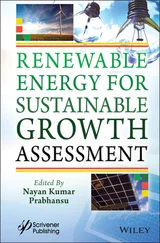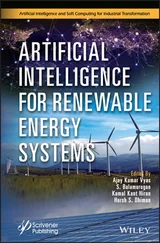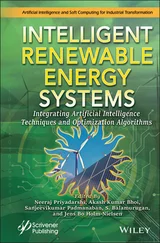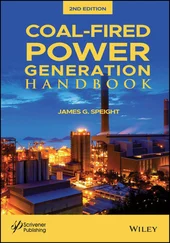James G. Speight - Encyclopedia of Renewable Energy
Здесь есть возможность читать онлайн «James G. Speight - Encyclopedia of Renewable Energy» — ознакомительный отрывок электронной книги совершенно бесплатно, а после прочтения отрывка купить полную версию. В некоторых случаях можно слушать аудио, скачать через торрент в формате fb2 и присутствует краткое содержание. Жанр: unrecognised, на английском языке. Описание произведения, (предисловие) а так же отзывы посетителей доступны на портале библиотеки ЛибКат.
- Название:Encyclopedia of Renewable Energy
- Автор:
- Жанр:
- Год:неизвестен
- ISBN:нет данных
- Рейтинг книги:3 / 5. Голосов: 1
-
Избранное:Добавить в избранное
- Отзывы:
-
Ваша оценка:
- 60
- 1
- 2
- 3
- 4
- 5
Encyclopedia of Renewable Energy: краткое содержание, описание и аннотация
Предлагаем к чтению аннотацию, описание, краткое содержание или предисловие (зависит от того, что написал сам автор книги «Encyclopedia of Renewable Energy»). Если вы не нашли необходимую информацию о книге — напишите в комментариях, мы постараемся отыскать её.
Written by a highly respected engineer and prolific author in the energy sector, this is the single most comprehensive, thorough, and up-to-date reference work on renewable energy.
Encyclopedia of Renewable Energy: Audience
Encyclopedia of Renewable Energy — читать онлайн ознакомительный отрывок
Ниже представлен текст книги, разбитый по страницам. Система сохранения места последней прочитанной страницы, позволяет с удобством читать онлайн бесплатно книгу «Encyclopedia of Renewable Energy», без необходимости каждый раз заново искать на чём Вы остановились. Поставьте закладку, и сможете в любой момент перейти на страницу, на которой закончили чтение.
Интервал:
Закладка:
Biodiesel has a strong ecological appeal and many reasons have been claimed to support its utilization as a diesel substitute. In general, these include: (i) biodiesel is biodegradable and harmless, (ii) biodiesel can be produced from renewable materials such as vegetable oils and ethanol derived from biomass, (iii) methyl esters usually contain little sulfur (approximately 0.001% w/w) while this undesired component is literally absent in biodiesel produced by ethanolysis, (iv) biodiesel is a diesel substitute, biodiesel decreases soot emission considerably (up to 50%), (v) biodiesel emits approximately the same amount of carbon dioxide that has been absorbed during cultivation of the oilseed, (vi biodiesel does not contain any of the carcinogenic polyaromatic components found in diesel oil, (vii) biodiesel has been recognized as a suitable outlet for the vegetable oil industry, serving as an important tool for market regulation, (viii) biodiesel can be used in blends or as a neat fuel, (ix) biodiesel is not considered as a hazardous good because it has a flash point above 110°C (230°F), (x) biodiesel has a superior lubrication capability and increases engine life, and (xi) biodiesel can be produced with a rather straight forward technology, particularly in the case of methyl esters (methanolysis).
The use of biodiesel in a conventional diesel engine also results in substantial reduction of unburned hydrocarbon derivatives, carbon monoxide, and particulate matter. Emissions of nitrogen oxides are either slightly reduced or slightly increased depending on the duty cycle and testing methods. The higher oxygen content of biodiesel enables a more complete combustion of the solid carbon fraction to carbon dioxide, while soluble hydrocarbon derivatives are unaffected or even increased.
Producers and users of biodiesel use the “B” factor system to state the amount of biodiesel in a fuel mix, similar to the “E” system used for fuel containing ethanol. For example, fuel containing 20% biodiesel is labeled B20, whereas pure biodiesel is referred to as B100.
See also: Bioalcohols, Biofuels – First Generation, Biofuels – Second Generation, Biofuels – Third Generation, Biogas, Vegetable Oil.
Biodiesel Feedstocks
A major focus has been and continues to be on biofuels produced from crops, such as corn, sugar cane, and soybeans, for use as renewable energy sources. Though it may seem beneficial to use renewable plant materials for biofuel, the use of crop residues and other biomass for biofuels raises many concerns related to major environmental problems, including food shortages and serious destruction of vital soil resources. Examples of feedstock for the production of biodiesel are (i) waste vegetable oil, (ii) animal fat including tallow, lard, yellow grease, chicken fat, and the by-products of the production of fatty acids from fish oil, and soybeans which are also used as a source of biodiesel ( Table B-4).
Table B-4Composition of various oils and fats used for biodiesel production.
| Oil or Fat | 14:0* | 16:0 | 18:0 | 18:1 | 18:2 | 18:3 |
|---|---|---|---|---|---|---|
| Corn oil | 1-2 | 8-12 | 2-5 | 19-49 | 34-52 | Trace |
| Cottonseed oil | 0-2 | 20-25 | 1-2 | 23-35 | 40-50 | Trace |
| Linseed oil | 4-7 | 2-4 | 25-40 | 35-40 | 25-60 | |
| Olive oil | 9-10 | 2-3 | 73-84 | 10-12 | Trace | |
| Peanut oil | 8-9 | 2-3 | 50-60 | 20-30 | ||
| Safflower oil – Hi linoleic acid | 5.9 | 1.5 | 8.8 | 83.8 | ||
| Safflower oil – Hi oleic acid | 4.8 | 1.4 | 74.1 | 19.7 | ||
| Rapeseed oil – Hi oleic acid | 4.3 | 1.3 | 59.9 | 21.1 | 13.2 | |
| Rapeseed oil – Hi erucic acid | 3.0 | 0.8 | 13.1 | 14.1 | 9.7 | |
| Soybean oil | 6-10 | 2-5 | 20-30 | 50-60 | 5-11 | |
| Tallow | 3-6 | 24-32 | 20-25 | 37-43 | 2-3 | |
| Yellow grease | 2 | 23 | 13 | 44.3 | 7 | 0.7 |
| *Indicates the number of carbon atoms in the alkyl chain and the position of the double bond. |
However, for a given production line, the comparison of the feedstocks includes several issues which are (i) chemical composition of the biomass, (ii) cultivation practices, (iii) availability of land and land use practices, (iv) use of resources, (v) energy balance, (vi) emission of greenhouse gases, acidifying gases, and ozone depletion gases, (vii) absorption of minerals to water and soil, (viii) injection of pesticides, (ix) soil erosion, (x) contribution to biodiversity and landscape value losses, (xi) farm-gate price of the biomass, (xii) logistic costs such as transport and storage of the feedstock), (xiii) direct economic value of the feedstocks taking into account the co-products, (xiv) creation or maintenance of employment, and (xv) water requirements and water availability. In addition, different types of feedstocks have different types of fatty acids. The fatty acids are different in relation to the chain length, degree of unsaturation, or presence of other chemical functions, such as fatty acids.
Tropical countries have the highest potential to produce bio-fuel crops: higher energy yields, better greenhouse gas balance if properly produced, lower costs, and in some countries, large reserves of uncultivated cropland. Sugar cane and palm are the highest yielding tropical biofuel crops and consequently provide the greatest carbon offsets. Industrialized countries with biofuels targets (such as the United States and the EU countries) are unlikely to have the agricultural land base needed to meet their growing demand for current production of bio-fuels, which are largely produced from food and feed crops (e.g., maize, palm, rapeseed, soybean).
Of importance are the combustion and flow properties of biodiesel which are determined primarily by the fatty acid content of the vegetable oil which affect the fuel properties of the biodiesel. Biodiesel has lower volumetric heating values (approximately 12%) than crude oil-derived diesel fuel, but biodiesel has a high cetane number (between 46 and 70) and high flash point.
In comparison to crude oil-derived diesel, the higher cetane number of biodiesel results in (i) shorter ignition delay, (ii) longer combustion duration, (iii) low particulate emissions, and (iv) minimum carbon deposits on injector nozzles.
See also: Biochemical Platform, Biodiesel, Biofuels.
Waste cooking oil is a valuable asset for conversion to liquid fuels, and the quantity of biodiesel which could be produced from waste cooking oil can be quantified in a manner similar to that of biodiesel produced direct from agriculture. The only difference is that rather than calculating crop yields, it is necessary to quantify the amount of waste oil available.
Biodiesel is a light to dark yellow liquid that is immiscible with water and has a high boiling point, low vapor pressure, a flash point of approximately 150°C (300°F), and a density on the order of 0.88 g/cm³. Biodiesel has a viscosity similar to petrodiesel (the current term to differentiate the different forms of diesel) and can be used as an additive in formulations of diesel to increase the lubricity of pure ultra-low sulfur diesel (ULSD) fuel.
Almost any variety of oil or grease (from new food-grade vegetable oil to used cooking oil or trap grease to wastewater treatment-plant grease) can be converted into biodiesel. However, the amounts of reactants (oil, methanol, and sodium hydroxide) vary to some degree, depending on what oil is used. The amount of methanol and sodium hydroxide must be sufficient to react with the vegetable oil, but excessive amounts of these reactants should not be used. Just as an engine requires excess air to be sure that all the fuel burns, it takes excess methanol to be sure all of the oil reacts.
Читать дальшеИнтервал:
Закладка:
Похожие книги на «Encyclopedia of Renewable Energy»
Представляем Вашему вниманию похожие книги на «Encyclopedia of Renewable Energy» списком для выбора. Мы отобрали схожую по названию и смыслу литературу в надежде предоставить читателям больше вариантов отыскать новые, интересные, ещё непрочитанные произведения.
Обсуждение, отзывы о книге «Encyclopedia of Renewable Energy» и просто собственные мнения читателей. Оставьте ваши комментарии, напишите, что Вы думаете о произведении, его смысле или главных героях. Укажите что конкретно понравилось, а что нет, и почему Вы так считаете.












